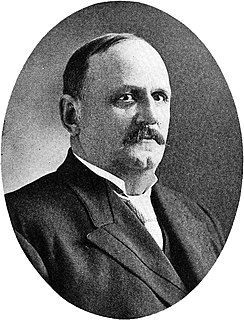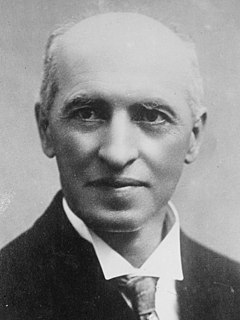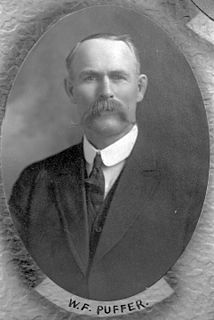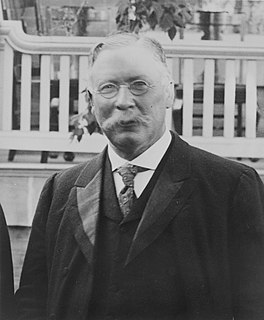
Charles Stewart, was a Canadian politician who served as the third premier of Alberta from 1917 until 1921. Born in Strabane, Ontario, in then Wentworth County, Stewart was a farmer who moved west to Alberta after his farm was destroyed by a storm. There he became active in politics and was elected to the Legislative Assembly of Alberta in the 1909 election. He served as Minister of Public Works and Minister of Municipal Affairs—the first person to hold the latter position in Alberta—in the government of Arthur Sifton. When Sifton left provincial politics in 1917 to join the federal cabinet, Stewart was named his replacement.

Arthur Lewis Watkins Sifton was a Canadian lawyer, judge and politician who served as the second premier of Alberta from 1910 until 1917. He became a minister in the federal cabinet of Canada thereafter. Born in Canada West, he grew up there and in Winnipeg, where he became a lawyer. He subsequently practised law with his brother Clifford Sifton in Brandon, where he was also active in municipal politics. He moved west to Prince Albert in 1885 and to Calgary in 1889. There, he was elected to the 4th and 5th North-West Legislative Assemblies; he served as a minister in the government of premier Frederick Haultain. In 1903, the federal government, at the instigation of his brother, made Sifton the Chief Justice of the Northwest Territories. After Alberta was created out of a portion of the Northwest Territories in 1905, Sifton became the first Chief Justice of Alberta in 1907 and served until 1910.

Alexander Cameron Rutherford was a Canadian lawyer and politician who served as the first premier of Alberta from 1905 to 1910. Born in Ormond, Canada West, he studied and practiced law in Ottawa before he moved with his family to the North-West Territories in 1895. There, he began his political career, winning in his third attempt a seat in the North-West Legislative Assembly. In keeping with the territorial custom, Rutherford ran as an independent but generally supported the territorial administration of Premier Frederick W. A. G. Haultain. At the federal level, however, Rutherford was a Liberal.

Sir Clifford Sifton,, was a Canadian lawyer and a long-time Liberal politician, best known for being Minister of the Interior under Sir Wilfrid Laurier. He was responsible for encouraging the massive amount of immigration to Canada which occurred during the first decade of the 20th century. In 1905, he broke with Laurier and resigned from cabinet over the issue of publicly funded religious education in the new provinces of Alberta and Saskatchewan.

George Hedley Vicars Bulyea was a Canadian politician and the first Lieutenant Governor of Alberta. As the youngest ever Lieutenant Governor, at age 46, he was appointed by Governor General Earl Grey on advice of Prime Minister of Canada Sir Wilfrid Laurier on September 1, 1905.

The 1905 Alberta general election was the first general election held in the Province of Alberta, Canada on November 9, 1905, to elect twenty five members of the Alberta legislature to the 1st Alberta Legislative Assembly, shortly after the province was created out of the Northwest Territories on September 1, 1905.

The 1909 Alberta general election was the second general election held in the Province of Alberta, Canada on March 22, 1909, to elect 41 members of the Alberta legislature to the 2nd Alberta Legislature.

The 1913 Alberta general election was held in March 1913. The writ was dropped on 25 March 1913 and election day was held 17 April 1913 to elect 56 members to the 3rd Alberta Legislature. Elections in two northern districts took place on 30 July 1913 to compensate for the remote location of the riding. The method to elect members was under the First Past the Post voting system with the exception of the Edmonton district which returned two members under a plurality block vote. The election was unusual with the writ period for the general election being a very short period of 23 days.

William Henry Cushing was a Canadian politician. Born in Ontario, he migrated west as a young adult where he started a successful lumber company and later became Alberta's first Minister of Public Works and the 11th mayor of Calgary. As Minister of Public Works in the government of Alexander Cameron Rutherford, he oversaw the creation of Alberta Government Telephones.

The 2nd Alberta Legislative Assembly was in session from March 23, 1909, to April 17, 1913, with the membership of the assembly determined by the results of the 1909 Alberta general election which was held on March 22, 1909. The Legislature officially resumed on March 23, 1909, and continued until the fourth session was prorogued and dissolved on March 25, 1913, prior to the 1913 Alberta general election.

Charles Wilson Cross was a Canadian politician who served in the Legislative Assembly of Alberta and the House of Commons of Canada. He was also the first Attorney-General of Alberta. Born in Ontario, he studied law at Osgoode Hall Law School before coming west to practise in Edmonton. He became active with the Liberal Party of Canada, and when Alberta was created in 1905 he was chosen by Premier Alexander Cameron Rutherford to be its first Attorney-General. Implicated in the Alberta and Great Waterways Railway scandal, he resigned in 1910 along with the rest of Rutherford's government.

John William Woolf was an American-born Canadian politician who served in the Legislative Assembly of the Northwest Territories and the Legislative Assembly of Alberta. Born in Utah to polygamous parents, he moved with them to Cardston, Alberta as a young man. There he became a prominent rancher, and was elected in the 1902 Northwest Territories election. When Alberta was created in 1905, he became a member of its first legislative assembly. He resigned that office in 1912 to return to the United States; his son believed that this was because he had taken a second wife and feared prosecution under Canadian polygamy laws. Back in Utah, he pursued a number of business ventures with his son. He died in 1950.

Charles Richmond Mitchell was a Canadian lawyer, judge, cabinet minister and former Leader of the Official Opposition in the Legislative Assembly of Alberta.

John Robert Boyle, was a Canadian politician and jurist who served as a Member of the Legislative Assembly of Alberta, a cabinet minister in the Government of Alberta, and a judge on the Supreme Court of Alberta. Born in Ontario, he came west and eventually settled in Edmonton, where he practiced law. After a brief stint on Edmonton's first city council, he was elected in Alberta's inaugural provincial election as a Liberal. During the Alberta and Great Waterways Railway scandal, he was a leader of the Liberal insurgency that forced Premier Alexander Cameron Rutherford from office.

Malcolm McKenzie was a Canadian politician who served as a member of the Legislative Assembly of Alberta and, briefly, as Alberta Provincial Treasurer.

William Franklin Puffer was a Canadian politician who served in the Legislative Assembly of Alberta from 1905 until 1917. Born in Ontario, he came west and settled in Lacombe, where he operated a butchery, among other interests. He was elected to the legislature in Alberta's first provincial election, and returned to office in each of the next two before being defeated in the 1917 election. He subsequently made two unsuccessful attempts to reclaim his seat.

Duncan McLean Marshall was a Canadian journalist, publisher, rancher provincial level politician and Minister of Agriculture in 2 provinces and later served in the Senate of Canada representing the province of Ontario.

The Alberta and Great Waterways Railway Scandal was a political scandal in Alberta, Canada in 1910, which forced the resignation of Liberal premier Alexander Cameron Rutherford. Rutherford and his government were accused of giving loan guarantees to private interests for the construction of the Alberta and Great Waterways (A&GW) Railway that substantially exceeded the cost of construction, and which paid interest considerably above the market rate. They were also accused of exercising insufficient oversight over the railway's operations.

The Rutherford Ministry was the combined Cabinet, chaired by Premier Alexander Cameron Rutherford, and Ministers that governed Alberta from the day following the province's Confederation into Canada on September 2, 1905, to part way through the 2nd Alberta Legislature on May 26, 1910.

















